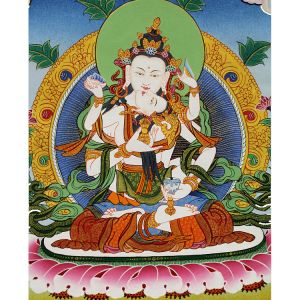Incest in Buddhism
The practice of incest is prohibited in all Buddhist traditions. Monks and nuns take vows of celibacy, and are prohibited from engaging in all forms of sexual activity. Both the Theravada and Mahayana traditions encourage laypeople to follow the five lay precepts, the third of which is the precept to avoid sexual misconduct. This is generally understood to mean that sex is properly conducted within marriage. Although some Buddhist societies tolerate premarital and even extramarital sex, incest appears to be universally condemned as a violation of this precept. While incest does occur in Buddhist societies, it is viewed as a violation of Buddhist ethics, and is thus strongly discouraged.
However, beginning in the seventh century, members of the Indian Buddhist community began composing tantras that evoke the subject of incest. Both the seventh-century Sub-ahupariprccha Tantra and the eighth-century Manjusrimulakalpa contain descriptions of a yaksini-sadhana, a ritual for summoning a female spirit using a mantra. This was a ritual conducted for the sake of sexual gratification; the texts claim that the yaksini could assume the form desired by the adept, and serve his lust throughout the night. Both texts specify that the yaksini could particularly assume the form of one’s female relatives, such as one’s mother.
This is confirmed by the eighth-century commentator Buddhaguhya, who noted in his commentary on the Subahupariprccha that this rite is intended for men who desire to enjoy another woman without incurring the faults of incest. Some Indian Buddhists appear to have seen sex with a summoned spirit as a way around the third precept. The yaksini could assume any form that one desires, but since she is not truly one’s mother, this is not actually incest. However, this was not a rite to be engaged in lightly; readers are warned that if they do not restrain their passions, the yaksini could devour them.
The rhetoric of sex with family members also appears in many later tantras such as the Guhyasamaja and Cakrasamvara Tantras. In its fifth chapter, the Guhyasamaja Tantra states that the adept who has sex with his mother, sister, or daughter can attain great success. In its thirty-third chapter, the Cakrasamvara Tantra describes sexual yogic practices to be undertaken with a consort and promises that if readers undertake these, even with female relatives, they will be liberated.
In evaluating passages such as these, it is important to note that transgressive rhetoric is common in tantric literature, and its interpretation is problematic; one cannot assume that these passages accurately reflect the behavior of actual Buddhists. One of the purposes of this rhetoric might be to shock the reader and simultaneously aggrandize the text and the practices it describes by promising salvation even to the gravest of sinners. Moreover, tantric exegetes typically provide alternate interpretations for transgressive passages. Commentators on the Cakrasamvara Tantra understand the “mother” here to be the consort of the “transgressor’s” guru, the “sister” to be one of the guru’s female disciples, and the “daughter” to be one of his own female disciples. It thus describes an alternate social order using familial kinship terminology. Sex within this context would only be incest in this metaphorical sense, and would not necessarily be a transgression of the third precept.
Source
